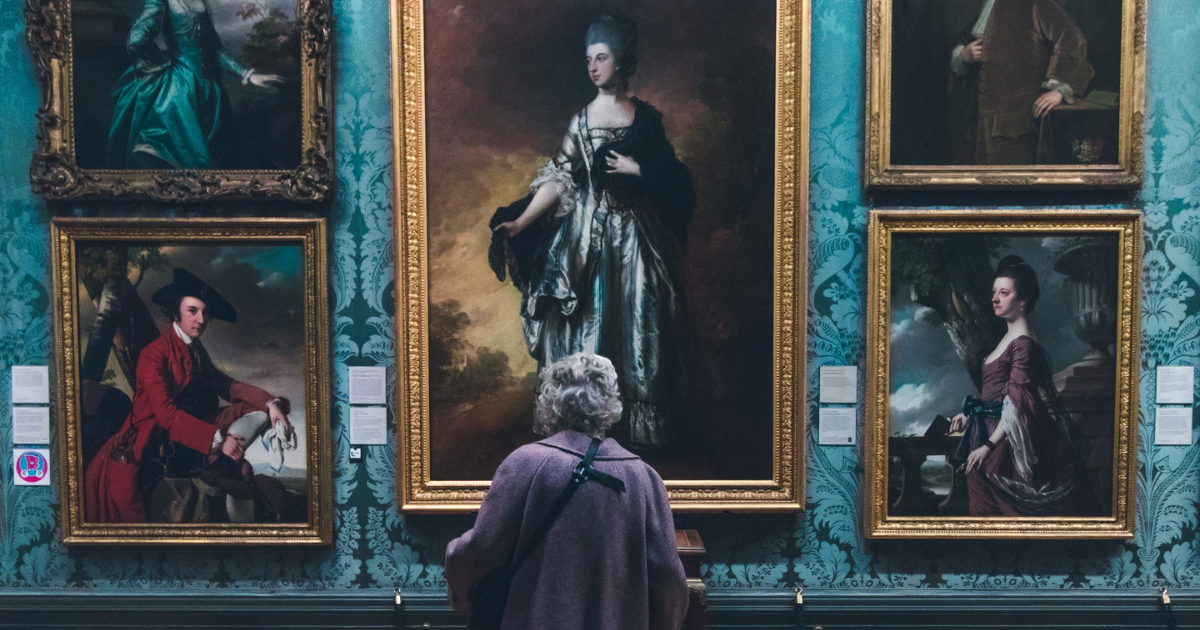The arts can be used to help people with dementia live better lives. Follow along to find out ways that using the arts with dementia can encourage a positive relationship between clients in an elderly home and their caregivers. At the Museum of Modern Art in New York City, an innovative program invites persons with dementia to the museum, after hours, for a guided engagement with specific works of art. The “Meet Me” program has been strikingly successful. The elderly persons with dementia and their caregivers reported positive mood changes. These changes included: longer sustained attention, and increased interpersonal interaction as they responded to four carefully chosen artworks. One family caregiver commented: “It was like the man I knew before this illness”, and another described her mother as “cognitively awakened”.
Why does art have the capacity to reach persons with dementia or Alzheimer’s in such a unique way?
Neuroscientists are still trying to unravel this mystery. One theory is that the arts activate a portion of our brain that is part of the reward center. Subsequently, the orbitofrontal cortex lights up when we have pleasurable, thrilling experiences. This very primitive reward center in our brains can remain active even when higher cognitive processes are in decline. Another theory is that our memories are embedded with music, color, and imagination. Meaning, that when other parts of the brain are compromised, these elements are more retrievable. This shows that art has the ability to evoke vibrant, often joyful responses in persons who suffer from dementia.
Understanding the Challenges
Part of the challenge in caregiving for persons with dementia is to continue to present them with rich environments. This means nourishing every sense with new and interesting things to see, smell, taste, touch, and hear. A person who appears dull and “out of it” one day can suddenly become very stimulated when presented with something that connects with a primitive sense of pleasure or with a deep depository of memory. When you work with Family Resource Home Care caregivers, you will find them to be “students” of the client’s life.
Questions to Consider in Elderly Home
What music was popular when they were teens? Top hits when they fell in love? Did music dance to? What foods did they eat during holidays or special occasions? Were there cultural or religious traditions formative in their lives? Did they play an instrument or take up some form of art or personal craftsmanship? What were their hobbies?
Caregiver & Client Examples in the Elderly Home
A woman with dementia sits and stares out a window for large parts of the day. She appears disconnected from the world around her. An alert caregiver, however, notices that her wardrobe is full of clothing that is bright and playful. Taking her cues from that style preference, the caregiver sits down and gives the woman a manicure with bright, cheerful polish. The woman begins to converse with the caregiver and moves her hands gracefully through the air like a ballerina as if showing off her nails. A connection was made!
A man with dementia tries to conduct his normal activities but is constantly frustrated that he cannot remember the sequence of steps needed. The caregiver notices that the home is decorated with a nautical theme, and the family confirms that the man’s hobby was restoring vintage boats. When the man becomes angry or withdrawn, his caregiving team snaps to a salute and asks the “Captain” for permission to come aboard and help with the task. When he is agitated, they give him an assembly from the boat to take apart and put back together with reassuring mastery. Connecting to his love and deep memories of restoring his boat not only improves his mood but also engages him in participating in the accomplishment of the task.
In these examples from our own caregivers, it is unclear if the connection made was because a reward center in the brain was activated, or whether the caregiver’s approach through color and craftsmanship accessed deeply embedded memories. What is clear is that persons with dementia experience a moment of connection and happiness, and that is what really matters!
Interested in learning more about our Dementia & Alzheimer’s Care services? (Click here)






